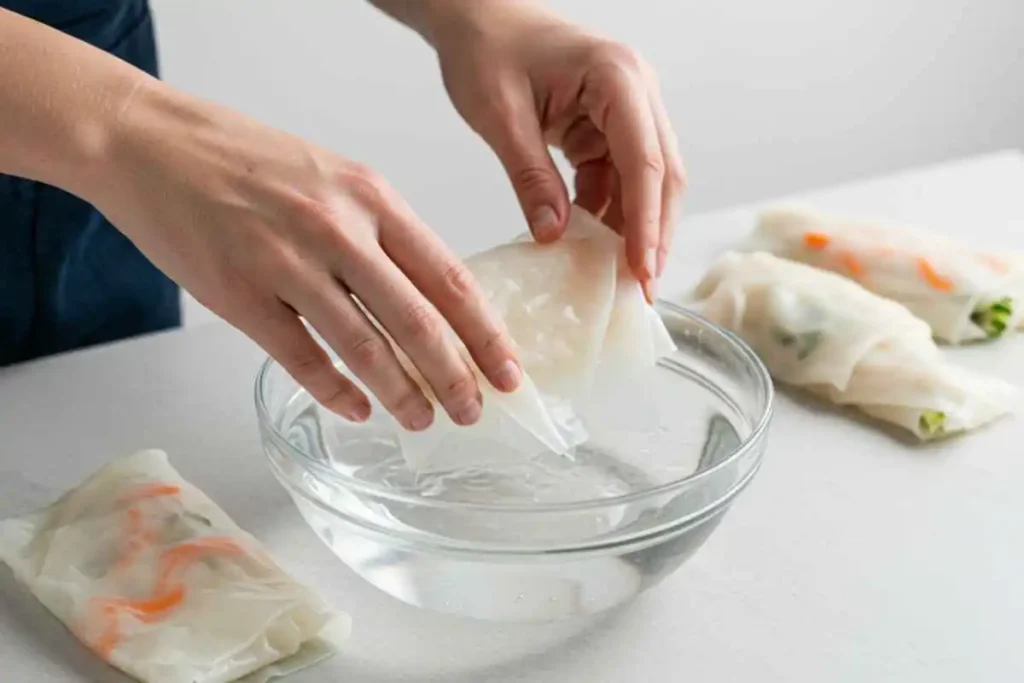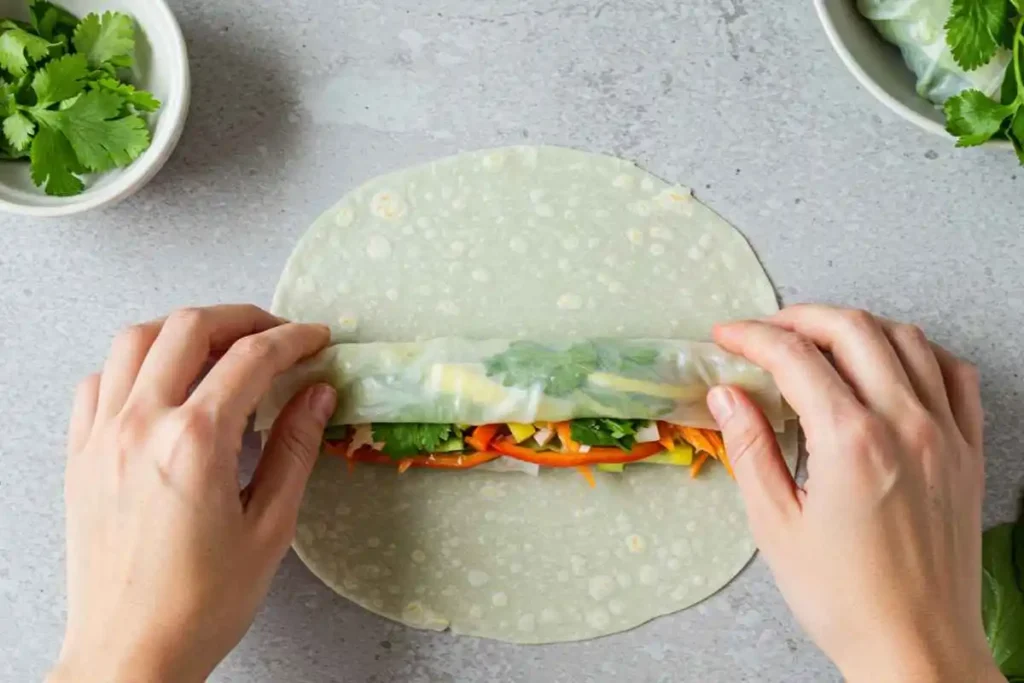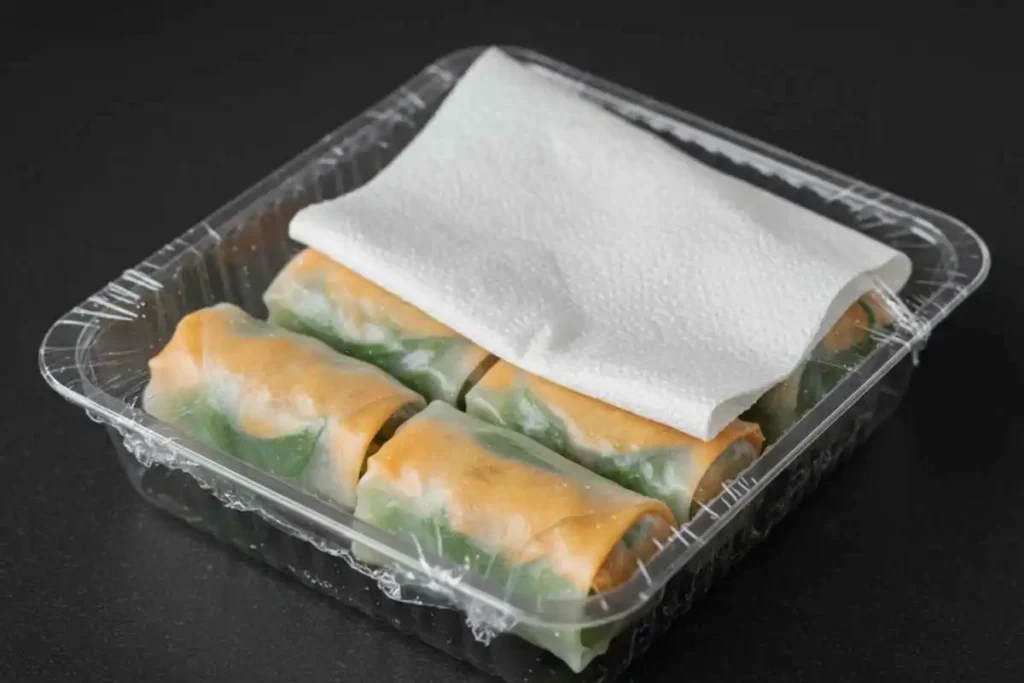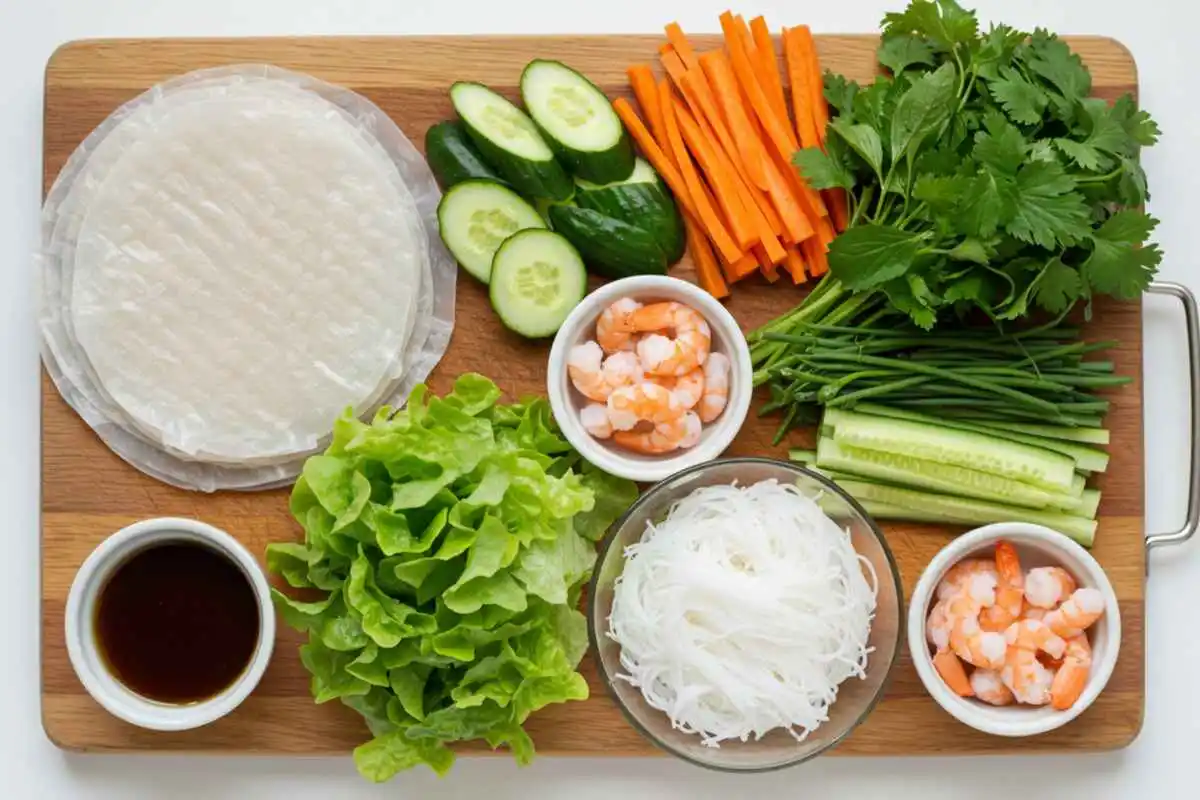Rice paper is a delicate yet versatile ingredient used in various cuisines, particularly in Vietnamese and Thai dishes. Whether you are making spring rolls, fresh wraps, or decorative edible sheets, getting the texture right is crucial. A common issue many encounter is sogginess, which can ruin the entire experience. This guide will walk you through the best practices to ensure your rice paper stays firm, flexible, and perfectly textured.
1. Introduction
Rice paper is an essential component in Asian cooking, commonly used for making spring rolls, summer rolls, and dumpling wrappers. However, many beginners struggle with soggy or slimy rice paper, leading to a frustrating experience.
In this guide, we will cover:
Why rice paper becomes soggy
The best soaking techniques
How to balance fillings and rolling techniques
Storage and serving tips to keep rice paper fresh
By the end of this article, you’ll have all the knowledge to make perfect non-soggy rice paper wraps every time!
2. Understanding Rice Paper
2.1 Composition and Varieties
Rice paper is traditionally made from rice flour, tapioca starch, water, and salt. The tapioca gives it a slight elasticity, making it easier to work with when softened.
There are different types of rice paper available:
- Traditional Vietnamese rice paper – thin, translucent, slightly chewy
- Tapioca-based rice paper – glossier and stretchier, more delicate
- Brown rice paper – a healthier alternative with a slightly rougher texture
Understanding the type of rice paper you’re using is important because each requires different handling techniques.
2.2 Traditional Uses in Various Cuisines
Rice paper is widely used in:
Vietnamese cuisine – fresh spring rolls (gỏi cuốn)
Thai cuisine – rice paper dumplings
Korean cuisine – wraps for BBQ meats
Fusion dishes – sushi-style wraps, desserts, and salads
Knowing its role in different cuisines helps in understanding how to work with it properly.
3. Factors Leading to Sogginess
The biggest challenge in using rice paper is preventing it from becoming soggy. Here are the main culprits:
3.1 Over-Soaking
Many people mistakenly soak rice paper for too long, making it too soft and fragile. Ideally, you should:
Dip the rice paper in water for 2–3 seconds only.
Let it sit on a plate for a few seconds to continue softening naturally.
3.2 Water Temperature
Using hot water accelerates absorption, leading to over-softened, slimy rice paper. Instead, use room temperature or slightly cool water for controlled softening.
3.3 Humidity and Storage Conditions
Storing rice paper in a humid environment can cause premature softening.
Keep unused rice paper in an airtight container to prevent moisture absorption.
4. Selecting the Right Rice Paper
4.1 Quality Indicators
To ensure firm, non-soggy rice paper, choose products that are:
Thin but not fragile – They should hold their shape when softened.
Uniform in texture – Avoid rice paper with inconsistent thickness.
High in rice content – Check ingredients to ensure minimal tapioca for better structure.
4.2 Recommended Brands
Some well-known brands that provide high-quality rice paper include:
- Three Ladies Brand (Vietnamese standard)
- Bánh Tráng Rice Paper
- Blue Dragon Spring Roll Wrappers
Using high-quality rice paper minimizes the chances of sogginess and breakage.
5. Optimal Soaking Techniques
5.1 Ideal Water Temperature
Use cool to lukewarm water (not hot!).
Hot water will cause over-softening and make it sticky.

5.2 Duration of Soaking
Quick dip (2–3 seconds) is enough.
Lay it on a dry, clean surface and allow it to absorb moisture.
5.3 Step-by-Step Soaking Guide
1️⃣ Fill a large shallow dish with room-temperature water.
2️⃣ Quickly dip the rice paper one side at a time.
3️⃣ Remove and place it on a dry plate or cutting board.
4️⃣ Let it sit for a few seconds before adding fillings.
Following these steps prevents over-soaking and stickiness.
6. Proper Handling Post-Soaking
6.1 Drying Methods
✔️ Place on a dry cloth or clean plate.
✔️ Avoid stacking wet sheets, as they will stick together.
6.2 Preventing Tears and Stickiness
✔️ Use light pressure when rolling.
✔️ Keep your hands slightly damp to prevent sticking.
7. Filling Considerations
7.1 Moisture Content of Fillings
✔️ Use dry or lightly damp ingredients.
✔️ Avoid excessive sauces or watery vegetables like cucumbers without patting them dry.
7.2 Balancing Wet and Dry Ingredients
✔️ Use a paper towel to dry fillings before placing them inside.
✔️ Incorporate crunchy elements like lettuce to absorb excess moisture.
8. Rolling Techniques
8.1 Tightness and Seal
✔️ Don’t overfill the wrapper—it can break.
✔️ Roll firmly but gently, tucking in the edges as you go.

8.2 Preventing Air Pockets
✔️ Avoid trapping air bubbles, as they cause sogginess over time.
9. Storage and Serving Tips
9.1 Short-Term Storage
✔️ Wrap rolls individually in plastic wrap or place them in an airtight container.
✔️ Keep at room temperature if serving within 2 hours.

9.2 Maintaining Freshness During Serving
✔️ Cover with a damp towel to prevent drying.
10. Common Mistakes to Avoid

Over-soaking
Using hot water
Overstuffing
Not drying wet ingredients
Delayed rolling after soaking
11. Expert Insights and Recommendations
✔️ Use a spray bottle instead of dipping rice paper to avoid excess water.
✔️ Practice rolling with small amounts first before making larger rolls.
12. Alternative Methods and Innovations
✔️ Damp cloth method – Lay a damp towel on a surface and place dry rice paper on top. Let it absorb moisture naturally.
✔️ Spray bottle technique – Lightly mist each side to control hydration.
13. Troubleshooting Guide
Too sticky? – Reduce soaking time.
Too dry? – Increase soaking time by 1 second.
Tearing? – Ensure hands are damp when handling.
14. FAQs
1. How do you keep rice paper rolls from getting soggy?
Use dry fillings and avoid over-soaking.
2. How do you make rice paper wraps soft?
Dip for 2-3 seconds in cool water and allow natural softening.
3. How to keep rice paper moist?
Cover with a damp cloth while waiting to serve.
4. How do you make rice paper not slimy?
Use room-temperature water and avoid excessive handling.
15. Advanced Troubleshooting: Fixing Soggy Rice Paper
Even with the right techniques, sometimes things don’t go as planned. If you find yourself with soggy rice paper, here’s how you can salvage your dish:
15.1 If the Rice Paper is Too Wet
- Lay the wet sheet on a dry paper towel and pat it gently.
- Let it air dry for 30 seconds before rolling.
- If it is beyond saving, use another sheet and soak it for a shorter time next attempt.
15.2 If the Rolls Start to Fall Apart
- Use a second layer of rice paper for additional strength.
- Roll tighter and neater to prevent leaks.
- Add a small amount of rice noodles or leafy greens inside to help absorb excess moisture.
15.3 If the Rice Paper is Sticky and Clumps Together
- Lightly brush your hands with oil before handling.
- Use a plastic cutting board instead of wood, which absorbs water.
16. Additional Expert Tips to Prevent Soggy Rice Paper
16.1 Chef-Recommended Methods
Professional chefs and home cooks alike swear by the following techniques:
Use cold water instead of warm water – slows down absorption and prevents sogginess.
Prepare all ingredients first – this minimizes the time rice paper sits out wet.
Layer with fresh greens – adding lettuce or herbs as the first layer acts as a moisture barrier.
16.2 The Best Surface to Work On
Using the right surface makes a difference:
Plastic cutting boards – prevent sticking.
Marble or granite countertops – cool surfaces slow absorption.
Damp kitchen towels – prevent the rice paper from drying out.
17. The Science Behind Rice Paper Absorption
Understanding how rice paper reacts with water can help in perfecting your technique.
- Rice paper is hydrophilic, meaning it absorbs moisture quickly.
- The starch in rice paper gelatinizes when exposed to water, causing it to soften.
- The longer it’s in water, the more it absorbs, leading to a mushy texture.
This is why a quick dip (2-3 seconds) works best!
18. Real-World Applications: Where You Can Use Rice Paper
Beyond making spring rolls, rice paper can be used in various creative ways:
18.1 Crispy Rice Paper Snacks
- Brush rice paper with oil, season with salt & spices, and bake for a crispy treat.
- Can be used as a low-calorie alternative to chips.
18.2 Rice Paper Dumplings
- Instead of traditional wheat dumpling wrappers, use double-layered rice paper for a unique texture.
- Pan-fry with a light coating of oil for a crispier finish.
18.3 Sushi-Style Wraps
- Rice paper can replace nori seaweed for a different twist on sushi.
- Great for those who don’t like the taste of seaweed.
18.4 Rice Paper Desserts
- Wrap fruit, nuts, and a touch of honey for a healthy dessert roll.
- Lightly fry or bake for a crunchy caramelized finish.
19. How Restaurants Keep Rice Paper Fresh
Professional kitchens have perfected the art of keeping rice paper rolls fresh. Here’s how they do it:
- They use a damp towel over prepared rolls to prevent drying out.
They serve fresh rolls immediately to avoid sogginess.
They store them with dividers to prevent sticking.
If you’re preparing rice paper rolls in advance, follow these expert strategies!
20. More Frequently Asked Questions (FAQs)
20.1 How do you keep rice paper rolls from getting soggy overnight?
- Wrap them in plastic wrap and store in an airtight container in the fridge.
- Place a damp paper towel over them before sealing.
20.2 Can I use hot water to soften rice paper?
- No, hot water over-softens and ruins the texture. Use room-temperature or cool water instead.
20.3 How do I make rice paper not slimy?
- Pat it dry with a paper towel after soaking.
- Use less soaking time and don’t over-handle it.
20.4 What’s the best way to store unused rice paper?
- Keep it in an airtight container in a dry place.
- Avoid humid environments as rice paper absorbs moisture easily.
Final Conclusion: Mastering Rice Paper Handling
By now, you should have all the pro techniques to prevent soggy rice paper and create perfect spring rolls, dumplings, and creative dishes.
Key Takeaways:
Soak for only 2-3 seconds – don’t overdo it!
Use room temperature water – avoid hot water.
Keep fillings dry – balance wet and dry ingredients.
Roll firmly but not too tight – prevent breaking.
Store properly – use damp towels and airtight containers.
With practice, you’ll soon be making restaurant-quality rice paper dishes with ease! 🎉

